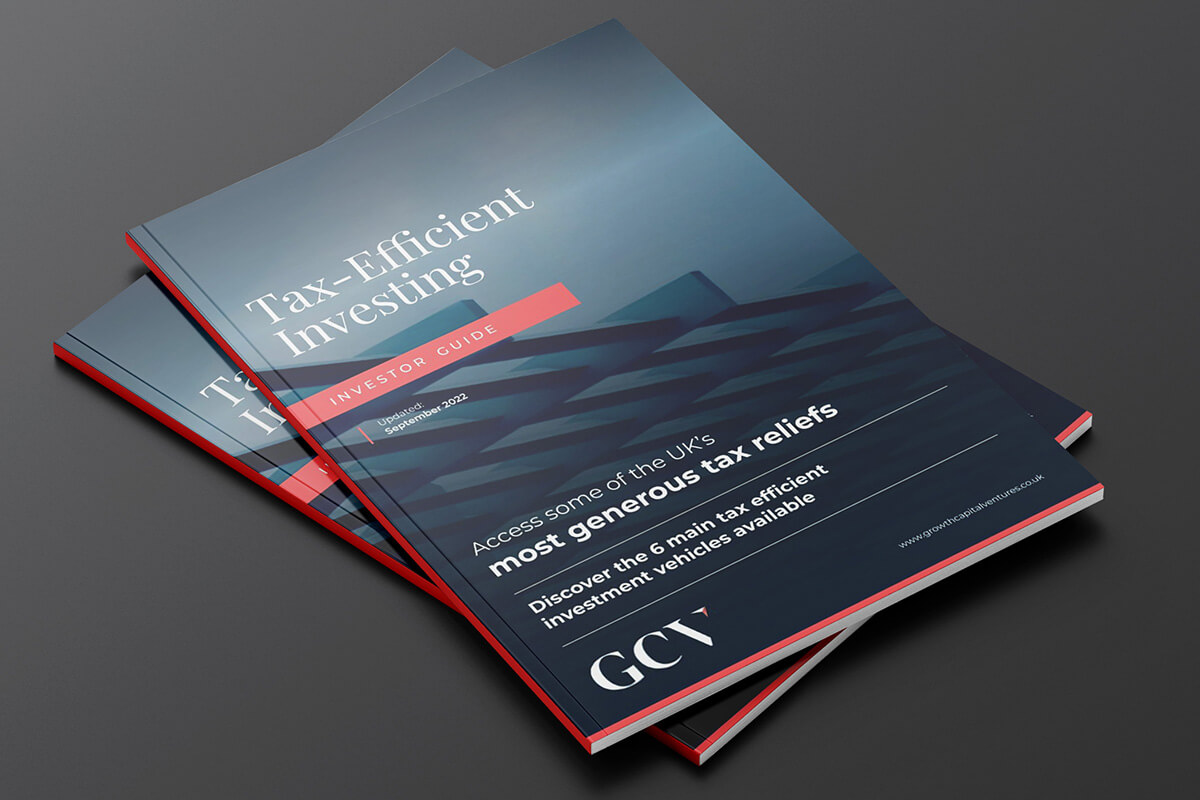The 5 best tax efficient investments in the UK
Investing in a tax-efficient manner has long been a crucial consideration for investors keen to minimise the risk and maximise the returns of their investments, with many seeking the best tax-efficient investments to optimise their portfolios. Now more than ever though - against rising taxes and lowering interest rates - ensuring the most effective steps are being taken to achieve this is key.
To do so, UK investors have at their disposal several tax wrappers, each with their own focus and set of benefits, offering investors the ability to choose an approach that best suits their individual investment objectives and personal circumstances.
From the ever-popular Individual Savings account (ISA) to the tax-generous Enterprise Investment Scheme (EIS), five main routes exist in the UK for investors to take advantage of.
1. Individual Savings Accounts (ISAs)
The Individual Savings Account (ISA) will likely be the most well-known tax wrapper on this list, with more than 12 million ISA accounts subscribed to in 2020/21 alone and almost 40% of the UK population holding some kind of ISA.
Introduced in 1999 to encourage saving and investing by offering generous tax reliefs, the ISA now comprises a family of products, with the main four being the Cash ISA, Stocks and Shares ISA, Innovative Finance ISA (IFISA) and Lifetime ISA.
Each ISA product covers a specific asset and has its own features and risk profile – for example, the Cash ISA is a low-risk cash savings product and the IFISA is a mid–high-risk investment product for alternative assets including peer-to-peer loans and debt-based securities. What is consistent amongst all, however, is that capital invested or saved is able to grow in an income and capital gains tax (CGT)-free environment.
Even over 20 years after their introduction, ISAs remain one of the most generous tax wrappers available. Whilst the Cash ISA still accounts for a large proportion of ISA holdings, a sustained period of low interest rates and soaring inflation of late has meant Cash ISAs aren’t keeping pace with inflation, and higher interest options such as the IFISA are increasing in popularity.
2. Pensions
One of the most effective ways to invest for later life is via a pension, with an annual allowance of £40,000 in the UK – or 100% of your income if lower – as well as tax relief at your prevailing rate of income tax.
It is worth noting that this allowance is tapered for individuals with an adjusted income of over £240,000 and a threshold income of over £200,000, reducing by £1 for every £2 over your adjusted income, down to a minimum reduced annual allowance of £4,000.
Similar to an ISA, your pension pot is able to grow in a tax-free environment. Once you have paid into a pension scheme, this amount can be invested into allowable assets, which can provide income or growth without needing to pay tax.
For experienced investors, Self-Invested Personal Pensions (SIPPs) have become popular for achieving exactly that. Whether they go into venture capital investments, bond transactions, commercial property investments or otherwise, the SIPP offers greater flexibility over where pension funds can be invested. This, combined with the scheme’s generous tax reliefs, has helped to make the SIPP an increasingly popular option.
Alternatively, for directors of limited companies, the Small Self-Administered Scheme (SSAS) can be a useful consideration. A SSAS, unlike a SIPP, is an occupational pension scheme, often set up by a business’ directors for themselves, their employees and select family members. It allows members' funds to be invested in a broader range of assets and also offers greater freedom over scheme rules and limits. SSASs provide investors with an opportunity to build a well-diversified investment portfolio that can double as a vehicle for business growth.
As with all pension schemes, both routes provide tax relief at the prevailing rate of income tax, meaning for every £1,000 contributed a basic rate taxpayer can claim back £200 and an additional-rate taxpayer £450. Any gain made from investments through these schemes will be free of capital gains tax, meaning shares held in the pension can achieve growth without any risk of paying CGT when they are sold.
Venture Capital Schemes
For experienced investors especially – typically those qualifying as high-net-worth individuals or sophisticated investors – a number of particularly generous tax-efficient investment products exist within the UK’s venture capital space:
- Enterprise Investment Scheme (EIS)
- Seed Enterprise Investment Scheme (SEIS)
- Venture Capital Trusts (VCTs)
This group of investment vehicles are designed primarily to encourage investment into early-stage companies and promote growth across the UK’s next wave of innovative startups and scaleups, making them some of the best tax-efficient investments available. All three routes utilise a range of notable investor tax reliefs to incentivise investment.
The reliefs offered by the EIS, SEIS and VCTs are similar, but the primary difference among the routes lies in the structure of VCTs in comparison to the EIS and SEIS.
3. Enterprise Investment Scheme (EIS)
The first of the UK’s venture capital schemes, the EIS was introduced as the successor to the Business Expansion Scheme in 1994 and was designed primarily to promote private investment into unlisted, early-stage businesses with the help of a generous range of investor tax reliefs
.
While the scheme has undergone a number of changes over the years its core goal has remained and - with over £34 billion of funds raised for more than 42,000 early-stage businesses - in this time has helped to provide a steady stream of growth capital to the businesses that require it the most.
Though offering to target higher money-on-money returns when compared to more mature alternatives due to their early-stage nature, EIS investment opportunities are inherently higher risk for that very same reason.

The scheme combats this downside risk with its library of tax incentives. From 30% income tax relief on the value of your investment to capital gains tax exemption when selling shares, inheritance tax exemption and loss relief, the range of EIS tax reliefs combine to minimise the risk and maximise the returns associated with investing in startups.
As well as mitigating almost a third of the capital at risk tied to the investment, additional incentives such as EIS deferral relief allow investors to reorganise and defer existing capital gains tax liabilities to later years, all while contributing to the growth of some of the UK’s most transformational startups.
4. Seed Enterprise Investment Scheme (SEIS)
The younger sibling of the EIS, the SEIS was launched in 2012 to encourage investment into the youngest strata of UK startups, and in that time has attracted circa £1.8 billion of private investment into more than 20,000 businesses.
Boasting stricter business eligibility criteria than its sibling scheme - including a maximum trading period of two years (rather than seven in comparison to the EIS), and a maximum employee count of 25 (rather than 250) - the SEIS ensures investment is funnelled into Britain’s youngest and most capital-imperative companies.
In order to offset the added level of risk, especially early-stage venture capital can possess, the scheme offers private investors an enhanced range of tax incentives, more generous still than its sibling scheme.
Similar to the EIS, the SEIS shares income tax, capital gains tax and inheritance tax exemption as well as loss relief. Where the scheme differs though, is that it offers investors 50% income tax relief on the value of an investment (rather than 30%) and includes capital gains reinvestment relief rather than deferral relief, whereby an investor is able to reduce an existing CGT bill by 50% should its value be invested into SEIS-qualifying shares.
Assigning equity at the beginning of a company’s growth journey, the scheme not only offers investors an opportunity for considerable capital growth over time, but also the ability to incorporate genuine positive impact into their portfolio in the form of some of the UK’s most transformative, impact-driven small businesses.
5. Venture Capital Trusts (VCTs)
Though their tax reliefs are similar to SEIS and EIS, VCTs are structured differently from the former schemes, largely due to their focus on multiple companies and the involvement of a fund manager.
Launched in 1995 shortly after the EIS, a VCT is a listed company that pools investment capital to then distribute across a built, managed portfolio of eligible companies. Being a managed investment structure, a VCT will hold a portfolio of investments into early-stage, unlisted and AIM-listed businesses, selected by a fund manager on behalf of their investors. The performance of the portfolio will then dictate the share value of the fund and subsequent investment growth.
As this structure allows investment into slightly later-stage businesses than the previous VC schemes, the reliefs offered are less numerous. Income tax relief of 30% can be claimed upfront and any dividends paid are not subject to income tax and do not affect annual dividend allowances. Similarly, any growth in the value of shares is not subject to capital gains tax, however, the inheritance tax exemption, deferral/reinvestment relief and loss relief offered with the previous government-backed schemes are not available via this VC approach.
While VCTs are, by nature, managed approaches to increasing tax efficiency, the SEIS and EIS can offer a choice of managed or direct investment. Both direct investments and EIS/SEIS funds usually give the investor choice over how and where their capital is invested, allowing for a more personally diversified portfolio of companies. For investors looking to craft a personalised VC portfolio that still desires the assistance and due diligence of investment professionals, reputable co-investment platforms can prove suitable solutions.
It is worth noting these three approaches do bear their own limits, both in terms of holding time (five years for VCTs and three years for SEIS or EIS) and annual investment allowances (£200,000 for VCTs, £150,000 for SEIS and £2,000,000 for EIS).
With investment allowances, portfolio diversification strategies and tax reliefs just three examples of aspects that can make each VC route more or less favourable for individuals, a host of additional differences exist between the three methods that can be worth exploring in detail for investors weighing up which path to select.
How to Make the Best Tax-Efficient Investments in the UK
Whether your aim is to maximise investment returns, reduce your tax bill as a high earner, or plan more effectively for retirement, there is a wide range of investment options available in the UK.
Although investors have access to a broad spectrum of opportunities in this space, it is crucial to conduct thorough due diligence before committing to any investment. This careful approach ensures that your chosen strategy aligns with your individual investment goals, personal circumstances, and experience levels.
For those seeking deeper insights, GCV's free guide to tax-efficient investing provides a comprehensive overview of the most effective strategies available—especially tailored for experienced and high-net-worth investors looking to capitalise on these benefits.
Best Tax-Efficient Investments UK FAQ
1. What are the tax benefits of investing via pensions?
Contributions to pensions receive tax relief at your income tax rate, meaning your investments can grow without incurring capital gains taxation. Additionally, withdrawals from pensions are taxed only when taken, potentially at a lower rate in retirement.
2. What are the risks associated with EIS and SEIS investments?
Both EIS and SEIS investments focus on early-stage companies, which inherently carry higher risks, including the possibility of business failure. However, these schemes offer substantial tax reliefs that can mitigate much of the financial risks involved.
3. Can I use more than one tax-efficient investment?
Yes, you can diversify your investment portfolio by using multiple tax-efficient wrappers. For example, you could invest in an ISA for tax-free growth and also contribute to a pension to benefit from tax relief on your contributions. Since ISAs only protect your capital after paying income taxes, using some of the other 5 best tax-efficient investment options like EIS, SEIS or VCTs could create a brilliant, diversified portfolio that benefits from tax breaks at every stage of taxation.
4. How do VCTs differ from EIS and SEIS?
VCTs are structured as listed companies that pool investor funds to invest in a diverse portfolio of early-stage businesses, while EIS and SEIS allow for direct investment in individual startups. VCTs provide income tax relief and dividends, but they lack some of the other reliefs offered by EIS and SEIS.
5. How can I determine which tax-efficient investments are right for me?
Choosing the best investment depends on your individual financial goals, risk tolerance, and investment horizon. It’s advisable to conduct thorough research or seek financial advice to create a tailored investment strategy aiming to benefit in full from the tax breaks available.
6. Where can I find more information about tax-efficient investing?
For a comprehensive guide on the most effective routes for tax-efficient investing in the UK, consider accessing GCV's free resources, which provide in-depth insights and strategies tailored to both new and experienced investors.
7. How can I get updated information about tax changes affecting investments?
You can stay informed about the latest tax changes affecting investments, as well as key updates on policy, economics, and venture capital, by signing up to the GCV Weekly Briefing.
Free Investor Guide
An investor's guide to tax efficient investing
Providing an insight into the tax efficient investment options accessible to UK investors, our free guide is a useful introduction to the schemes and wrappers that can help you maximise returns and savings while minimising risk when investing into early stage companies.

%20(3)%20(2).jpg)








